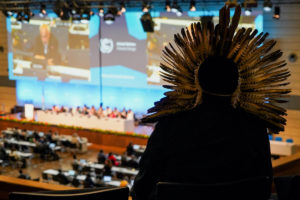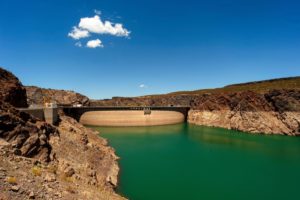In January, nine Chinese energy companies committed to invest nearly US$14 billion in renewable energy development in the Philippines. The companies expressed interest mainly in solar and offshore wind, but also hydropower, geothermal and biomass. Notable among them was state-owned China General Nuclear Power Group, the country’s largest nuclear power producer.
Energy experts in the Southeast Asian nation have welcomed these investments, but also expressed concern about how the administration, led by President Bongbong Marcos, will ensure projects succeed.
During the term of the former president, Rodrigo Duterte, Chinese leader Xi Jinping promised to support infrastructure construction under the Belt and Road Initiative (BRI), but progress has been limited. In 2016, Duterte returned from a visit to Beijing with $24 billion worth of deals with China, including for infrastructure projects. However, only two dams and two bridges have since been completed, both in Manila.
Challenges for renewable energy
In 2008, the Philippines attempted to shift away from fossil fuels towards renewables with the passing of its Renewable Energy Act. But coal continues to dominate the energy mix.
Department of Energy data from October 2022 revealed that 42% of electricity was still generated from coal, while renewables accounted for 29.3%. Of these, hydropower provided 13.6%, followed by geothermal (7.0%), solar (5.4%), biomass (1.8%) and wind (1.6%).
The country does not yet have a net-zero target but it plans to increase the share of renewables to 50% by 2040. Given installed generation capacity stood at 27 gigawatts in 2021, an additional 52 gigawatts will be needed to meet the 2040 goal.
Ian Rivera, national coordinator of the Philippine Movement for Climate Justice, an alliance of 150 national networks, said that renewables are failing to penetrate the energy system because of delays in implementing mechanisms under the Renewable Energy Act.
“Procuring permits alone for renewable energy projects can take two to five years,” he said. “It is also challenging to secure financial commitments from banks with strict requirements and high-interest rates.”
Welcome investment
There has as yet been no further announcement from the government on the pledges made by the Chinese companies in January.
However, Mylene Capongcol, assistant secretary of the Department of Energy (DOE), told China Dialogue that the department is doing its best to make sure the pledges translate into actual infrastructure.
In November 2022, the DOE amended the Renewable Energy Act to allow 100% foreign ownership of renewables projects, so international companies would get more involved in the sector.
“The DOE released Market Development Support Facilities or policies to guide foreign investors with their investments” explained Capongcol. She gave the example of the Renewable Portfolio Standards, which mandates that at least 1% of electricity sold by utility companies be derived from renewable sources.
Angelo Kairos Dela Cruz, executive director for the Institute for Climate and Sustainable Cities, a policy think-tank, said the Philippines has to make progress in attracting the foreign direct investments it needs to develop renewable energy.
“The sufficiency of power supply in the Philippines is a recurring issue for several years in a row. It needs to be addressed immediately and renewable energy is one of the solutions,” Cruz said. “This will include welcoming developers that will fast-track the inclusion of renewable energy in the generation mix that can help lead to a more affordable, reliable, and secure power system,” he added.
The role of government is not to wait for investments but to be proactive in clearing obstacles to them. Evidently, investors feel that government signals and policies are not clear.Filomeno Sta. Ana, co-founder and coordinator of Action for Economic Reforms
Based on data shared with China Dialogue by the DOE, seven renewable energy projects with Chinese investments are currently in development and one is in pre-development. These include five hydropower schemes with a combined capacity of 274 megawatts, two wind farms totalling 180 megawatts, and one solar project of 88 megawatts. They are located in provinces including Ifugao, Ilocos Norte and Ilocos Sur in the northern Philippines, and Aklan in the Visayas region.
Ian Rivera of the Philippine Movement for Climate Justice, said: “We welcome these Chinese investments because they can provide the necessary funding to expand the renewable energy transition.”
Meanwhile, Filomeno Sta. Ana, co-founder and coordinator of Action for Economic Reforms, a think-tank, cautioned that Chinese companies have so far only pledged to invest.
“Any investor, regardless of nationality, wants policy certainty, which likely is missing in the Philippines. The role of government is not to wait for investments but to be proactive in clearing obstacles to them. Evidently, investors feel that government signals and policies are not clear,” said Sta. Ana.
Past Chinese investment
Chinese investors had pledged significant involvement in building inter-island bridges under Duterte’s Build, Build, Build programme, but most big projects were later “deemed unfeasible” by the government and did not materialise. Rosb Guzman, executive editor for think-tank the IBON Foundation, expresses scepticism about Chinese investment in the Philippines. Previous initiatives usually came with onerous conditionalities, as with the Kaliwa Dam and Chico River irrigation project, she says. Despite a number of inquiries on these projects’ constitutionality, the Kaliwa Dam is now 22% complete, and the Chico River project has been inaugurated.
A 2019 press release by IBON revealed that the Duterte government had signed lopsided loan contracts with China, providing resources and state assets as collateral in the event of loan default. In 2022, petitions that sought to have the loans declared unconstitutional were junked by the Philippine Supreme Court.
The Department of Justice has ruled as constitutional the 100% foreign ownership of renewables projects, but Guzman think this could mean projects will not be designed for the benefit of local people.
“China demands that the projects it funds exclusively use Chinese contractors and, more than what has been the [Philippines’] experience with Japan, incorporate the use of Chinese labour. Chinese loans are beyond the scope of Philippine laws and are governed in accordance with the laws of China,” said Guzman.
She said that the country has vast potential to replace fossil fuels, but that it must be wary of the global powers using environmental rhetoric to monopolise these sources, and in the end still produce electricity that is unaffordable for Filipinos. She also noted the opportunities and challenges around investments from both China and the US, in the context of growing tensions and competition between the two economic superpowers, including in the financing of clean energy superpowers.
“The Marcos Jr government can use the US–China energy competition to its own advantage by requiring the most benefits for the domestic economy from foreign direct investments. However, it seems to be simply kowtowing to both and remains obsessed with its FDI-led development paradigm,” she said.
“Will the Chinese investments deliver, as there seems to be a notion in the past that they fizzled out even before they took off? The more relevant question is, will the Philippines get the most benefit, but that seems to be moot already,” she ended.









